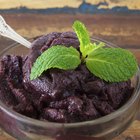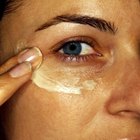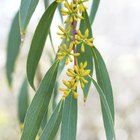Castor oil is an old remedy for various ailments. While it cannot cure every symptom or sickness, it is a popular product that has been used for years and should hold a proper place in every medicine cabinet. The most common use for castor oil is constipation, though it can be used for a host of conditions including skin ulcers, fungal infections and even acne. According to Dr. David G. Williams, the oil is rich in ricinoleic acid, which gives it a high concentration of unsaturated fatty acid, thought to be responsible for castor oil's effectiveness.
Internal External Uses
The healing properties present in castor oil make the oil an ideal remedy for both external and internal use. The ricinoleic acid present in castor oil can be effective for preventing the growth of bacteria, viruses, bacteria, yeasts and molds. According to Dr. Williams, castor oil has also been used for the treatment of skin ulcers.
Nail Fungus/ Ringworm
Because castor oil can aid in preventing the spread of bacteria, it may be a suitable treatment for fungal infections. Examples are nail fungus and ringworm, an infection of the skin. Ringworm is common among children and is highly contagious. The symptoms include itching, scaling, redness and hair loss (when occurring on the scalp). According to the American Academy of Dermatology (AAD), fungal infections like ringworm typically require many weeks of oral antifungal medicine to treat. Dr. Williams, however, touts the use of castor oil instead.
Acne
Acne is a common skin irritation that can include mild or serious lesions. These lesions may be helped with over-the-counter treatments like benzoyl peroxide, resorcinol and salicylic acid, which are common ingredients in most acne washes, creams and masks, according to the AAD. Castor oil, though an obscure treatment, may be effective at treating the acne condition due to its anti-inflammatory uses and effectiveness at killing bacteria.
Related Articles

Can Borage Oil Help Acne?

Benefits of Shea Butter and Coconut Oil ...

Arnica for Acne

Acai Berry & Acne

Dandelion Root for Reduced Acne Symptoms

List of Retinoids

The Best Facial Moisturizers for People ...

Fraxel Laser Treatment Dangers

Review of New-Skin Scar Therapy

How to Prevent Pock Holes From ...

Castor Oil for Joint Pain

Can Tri-Luma Be Used to Fade Acne Scars?

What Are the Benefits of Ashwagandha in ...

How to Have Flawless Armpits

The Use of Neem Juice in Skin Care as ...

Jojoba Oil Benefits

Grapefruit Extract for Eczema

Eucalyptus Oil & Acne

Chamomile Essential Oil Benefits

Lavender Oil & Acne
References
Writer Bio
A health-care professional for more than 10 years, Rica Lewis has obtained numerous certifications in the industry. In 2006 she began channeling her knowledge into health-related articles for print and online publications. Her work has appeared in "Metroparent Magazine," "Anew Heart Healthcare Magazine" and community newspapers. Lewis earned a diploma from LongRidge Writers Institute.